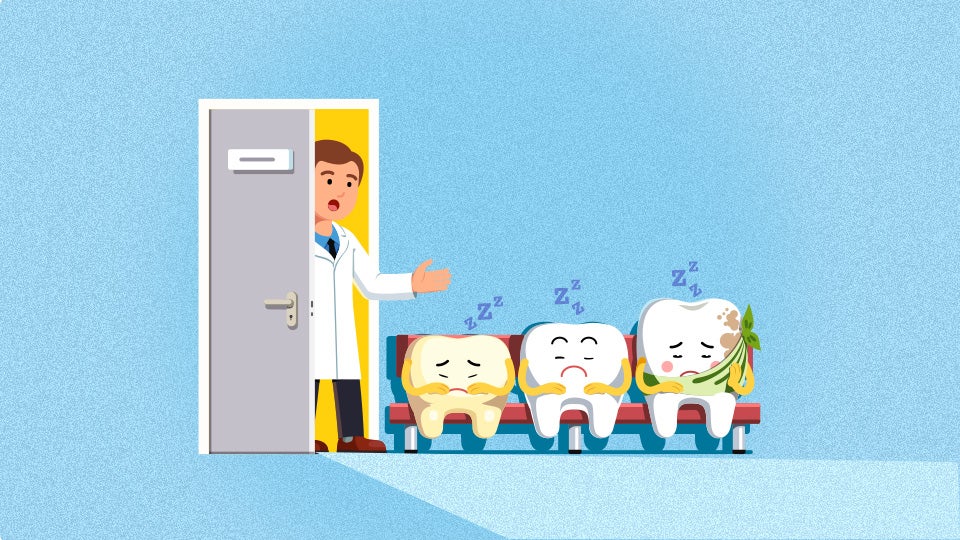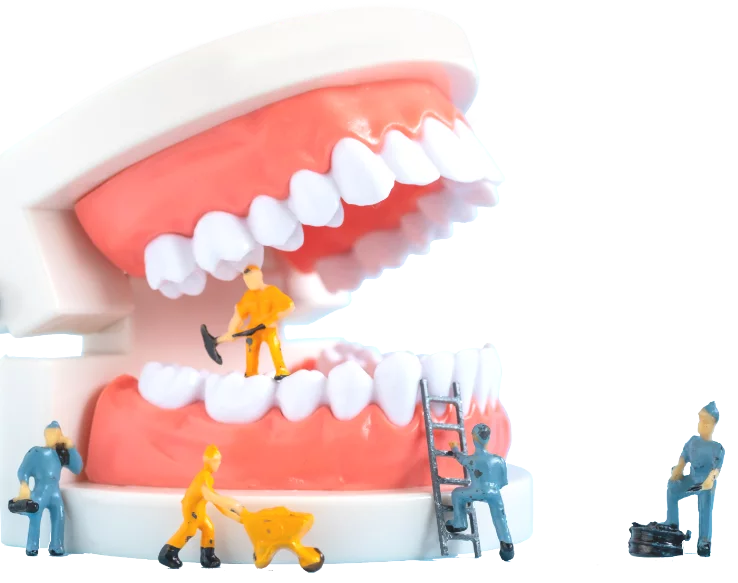Blog Summary: You can definitely get braces as an adult! In this guide, we cover everything you need to know about adult braces—from why more people in their late 20s through their 70s are choosing adult orthodontic treatment, how the process works, what types of braces are available, and how long it typically takes.
Can Adults Get Braces?
Yes, adults can get braces, regardless of age. Deciding to get braces is a personal consideration. However, age should not be a factor that keeps you from doing it in your decision-making process. Patients both young and old find that orthodontic treatment from Smile Generation Trusted Dentists gave them a lot of benefits in addition to the smile they always wanted.
Is There An Age Limit for Adult Braces?
There isn't an age limit to getting adult braces. Adults in their late 20s, to adults over 70 years of age can consider getting orthodontic treatment. You can find an ortho dentist near you today to get a consulatation to start your adult orthodontic journey.
Ready to explore adult braces? Use the Smile Generation® Find a Dentist tool to connect with an orthodontist near you and schedule a consultation today.
How Long Do Adults Wear Braces?
Key Things to Know:
Treatment time varies based on your case and appliance type.
Most adults wear braces for 12 to 36 months, averaging about 25 months.
Adults usually wear braces for about 12 to 36 months. Treatment can take a bit longer than it does for teens, but the results are just as strong—and often even more rewarding. Estimates suggest that mild orthodontic cases take as little as 12 months while others take three years.[9] Per one study, researchers determined that the average length of time for treatment for patients in a fixed appliance (which means braces) is 24.9 months.[10] And, yes, in some cases, orthodontic treatment can take longer than three years.
Why Do Adults Get Braces? (Pros of Adult Braces)
There are many pros to getting adult braces. Looking better by having a straighter smile is only one benefit of modern adult orthodontic treatment. The following are other essential benefits to your oral health that adult braces can fix:
- Confidence boost when you show off your smile
- Easier to clean and floss your teeth
- Crowded Teeth
- Gaps Between Teeth
- Overbites
- Underbites
- Misaligned Teeth
- Jaw Alignment Issues
- Bite Problems (General)
Another benefit of adult braces is that they can correct issues with your bite, also known as your occlusion. Improving occlusion can help prevent long-term oral health complications. Misaligned teeth are also harder to clean, making tooth decay more likely. When decay progresses, it can lead to gum disease, which—if left untreated—can result in tooth and bone loss. Even worse, gum disease has been linked to systemic health conditions, including stroke, heart disease, diabetes, and adverse pregnancy outcomes.
Do Braces Hurt More as an Adult? (Cons of Adult Braces)
The short answer to this question is no; braces are not more uncomfortable as an adult. However, braces are uncomfortable when you first get them or when you have an adjustment.
A good analogy is new shoes. If you get a new pair of shoes, they might be uncomfortable when you first wear them. After you break the shoes in, though, they get more comfortable. The same applies to your braces. The following are a few things you may experience with adult braces:
- Sore Gums
- Mouth Discomfort
- Lifestyle changes such as not eating certain foods or snacks while having adult braces (sorry popcorn!)
How Much Do Adult Braces Cost?
Adult braces typically cost between $3,250 and $5,550. Your exact cost depends on the complexity of your case, the type of braces, and how much tooth or jaw correction you need. Because every smile is different, your treatment plan may fall slightly below or above this range — but most adults fit comfortably within it.
Does Insurance Cover Adults Braces?
Key Things to Know:
Adult braces coverage is limited and not included in most dental plans.
Employer plans are fixed, while individual plans offer more choice.
Coverage caps and waiting periods apply to both types of plans.
Dental insurance with an orthodontic benefit can help reduce the cost of adult orthodontics. However, orthodontic benefits are not part of every policy, and usually, when they are part of the policy, they are for teens. In other words, finding insurance coverage for adult braces might take some research.
Dental insurance policies are offered in two ways. First, there are employer-sponsored dental plans, which you can sign up for at work. Next, there are individual plans that you purchase directly from the dental insurance provider. Your company determines the benefits offered of your employer-sponsored plan, so you are limited to what they negotiate regarding adult braces coverage and benefits. Also, there are often limitations to coverage, usually around $1,000 to $1,500 for a lifetime benefit per member and 6- to 12-month waiting periods before benefits are available.
Unlike employer plans, you can choose the benefits on individual plans that you buy yourself. For example, Colgate.com names a plan from Delta Dental, DeltaCare USA PAA48, one of the largest nationwide dental insurance suppliers, that can reduce the cost of adult braces. However, it is essential to note that individual plan benefits and premiums vary by state and other factors, like age and gender, so be prepared to do some comparison shopping before committing. Also, like employer-sponsored dental insurance policies, there are coverage limits and waiting periods involved.[i]

Find an Orthodontist Near You
Still, have questions about adult braces or need more information about the pros and cons of getting braces as an adult? Use our Find a Dentist tool to find a Smile Generation orthodontist near you to schedule your free consultation. Not only can you get your questions answered about braces options for adults or problems with braces in adults, but your orthodontist will also be able to tell you what they anticipate is necessary for your particular case.
Find your trusted, local dentist today!
Adult Braces FAQs
Adults may need braces to correct issues like overcrowded teeth, crooked teeth, or bite problems. Getting braces can also improve oral health and support long-term dental function.
You may feel some discomfort when braces are first applied or after adjustments, but this is temporary. Most adults adjust quickly to the sensation.
Some dental insurance plans offer coverage for adult orthodontics, but not all. It’s important to check with your provider to understand your specific benefits.
Adults of all ages can get braces—even in their 50s or 60s. The key factor is having healthy teeth and gums to support treatment.
Most adults wear braces for about 18 to 24 months, though treatment time varies based on individual needs.
Sources
[1] American Association of Orthodontists (2017, October 1). 7 myths about orthodontic treatment. Retrieved March 16, 2022, from https://aaoinfo.org/whats-trending/7-myths-about-orthodontic-treatment/ (Reviewed May 22, 2025)
[2] Orthodontics Australia. Braces myths debunked. Retrieved March 16, 2020, from https://orthodonticsaustralia.org.au/braces-myths-debunked/ (Reviewed May 22, 2025)
[3] Seladi-Schulman, J. (2021, March 1). What are self-ligating braces? Healthline. Retrieved March 15, 2022, from https://www.healthline.com/health/dental-and-oral-health/self-ligating-braces (Reviewed May 22, 2025)
[4] Wiley, C. What are lingual braces? Colgate. Retrieved March 17, 2022, from https://www.colgate.com/en-us/oral-health/adult-orthodontics/what-are-lingual-braces/ (Reviewed May 22, 2025)
[5] Hunt, J. (2019, June 25). Average cost of braces from the ADA. The Balance. Retrieved September 24, 2019, from https://www.thebalancemoney.com/ (Reviewed May 22, 2025)
[6] Are you too old for braces? Harvard Health Publishing. Retrieved September 24, 2019, from https://www.health.harvard.edu/healthbeat/are-you-too-old-for-braces (Reviewed May 22, 2025)
[7] Connor, E. (2017, May 2). Braces in adults. Healthline. Retrieved March 15, 2022, from https://www.healthline.com/health/dental-health/adult-braces (Reviewed May 22, 2025)
[8] How to find dental insurance that covers braces for adults. Colgate. Retrieved March 15, 2022, from https://www.colgate.com/en-us/oral-health/adult-oral-care/how-to-find-dental-insurance-that-covers-braces-for-adults (Reviewed May 22, 2025)
[9] Silver, N. (2021, January 11). How long do braces take? Healthline. Retrieved March 15, 2022, from https://www.healthline.com/health/how-long-do-braces-take#average-duration (Reviewed May 22, 2025)
[10] Abbing, A., Koretsi, V., Eliades, T., et al. (2020). Duration of orthodontic treatment with fixed appliances in adolescents and adults: A systematic review with meta-analysis. Progress in Orthodontics, 21, 37. https://doi.org/10.1186/s40510-020-00334-4 (Reviewed May 22, 2025)
[11] Connor, E. (2017, May 2). Braces in adults. Healthline. Retrieved March 15, 2022, from https://www.healthline.com/health/dental-health/adult-braces (Reviewed May 22, 2025)
[12] Ellis, R. R. (2015, December 15). Straight talk about braces for adults. WebMD. Retrieved March 15, 2022, from https://www.webmd.com/oral-health/features/straight-talk-about-braces-for-adults#1 (Reviewed May 22, 2025)
[14] Braces. MouthHealthy. Retrieved September 24, 2019, from https://www.mouthhealthy.org/all-topics-a-z/braces/ (Reviewed May 22, 2025)
[15] Abbing, A., Koretsi, V., Eliades, T. et al. Duration of orthodontic treatment with fixed appliances in adolescents and adults: a systematic review with meta-analysis. Prog Orthod. 21, 37 (2020). https://doi.org/10.1186/s40510-020-00334-4
[16] Mavreas, D., & Athanasiou, A. E. (2008). Factors affecting the duration of orthodontic treatment: A systematic review. European Journal of Orthodontics, 30(4), 386–395. https://doi.org/10.1093/ejo/cjn018 (Reviewed May 22, 2025)
Smile Generation blog articles are reviewed by a licensed dental professional before publishing. However, we present this information for educational purposes only with the intent to promote readers’ understanding of oral health and oral healthcare treatment options and technology. We do not intend for our blog content to substitute for professional dental care and clinical advice, diagnosis, or treatment planning provided by a licensed dental professional. Smile Generation always recommends seeking the advice of a dentist, physician, or other licensed healthcare professional for a dental or medical condition or treatment.









